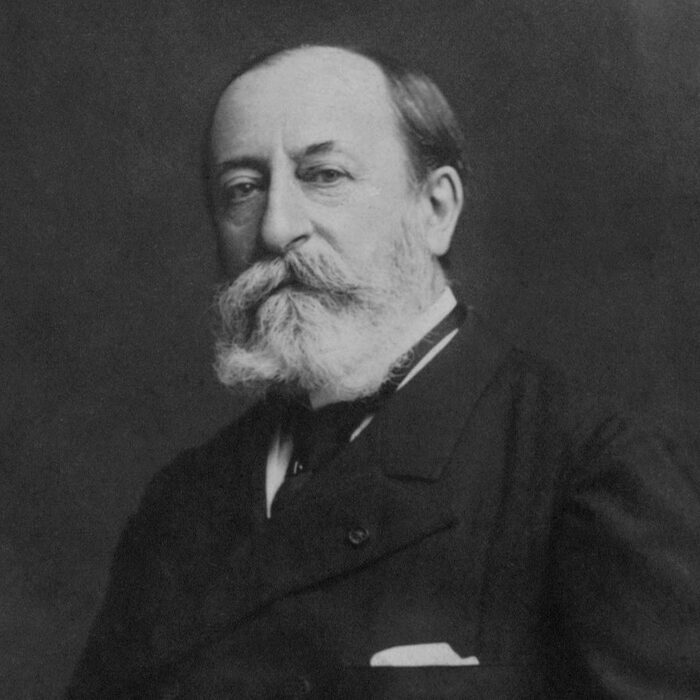
CAMILLE SAINT-SAËNS
Born October 9, 1835 in Paris;
died December 16, 1921 in Algiers.
CELLO CONCERTO NO. 1 IN A MINOR, OP. 33
- First performed on January 19, 1873 in Paris with Auguste Tolbecque as soloist.
- First performed by the Des Moines Symphony on October 20, 1968 with Zara Nelsova as soloist and Robert Gutter conducting. Three subsequent performances occurred, most recently on May 13 & 14, 2017 with Matt Haimovitz as soloist and Joseph Giunta conducting.
(Duration: ca. 19 minutes)
Much of the history of 19th-century music could be written in the terms of Beethoven’s influence. Beside exploding the emotional and expressive boundaries of earlier music, he also bequeathed the composers who followed a whole arsenal of technical weapons with which to do battle against those devilishly recalcitrant musical notes: rich harmonies, complex textures, expanded instrumental resources, vibrant rhythmic constructions. Not the least of his compositional legacies was the process of total musical structure. His symphonies were created as great single spans of tightly integrated music rather than as four separate movements, as had been the models he inherited. He accomplished this structural unity in two ways. One was by connecting movements directly together, as in the closing two movements of the Fifth Symphony and the last three of the Sixth. The other was by recalling themes from earlier movements during the unfolding of the piece. Most of the important Romantic composers followed the lead of Beethoven in finding such integrated structures for at least some of their large, symphonic works. Saint-Saëns’ Third Symphony,Fourth Piano Concerto, First Violin Concerto and this A Minor Cello Concerto are among his compositions that exhibit carefully integrated formal structures.
The Cello Concerto No. 1 is in a single movement. It begins with an impetuous theme in rushing triplets for the soloist that recurs throughout the piece as a supporting pillar. A contrasting, lyrical second theme for the cello is accompanied by a sedate, chordal accompaniment for the string choir. The vibrant motion of the opening theme soon returns and encourages the entire ensemble to join in a developmental discussion. The lyrical theme is heard again, this time as a transition to the Concerto’s central portion, a slow movement with the spirit of a delicate minuet embroidered with a simple, flowing descant from the soloist. The mood of this quiet little dance is broken by a resumption of the rushing triplet theme acting as a link to the Concerto’s last large division. After a brief pause, the finale-like section begins with the cellist’s introduction of a gently syncopated theme. The music builds on this theme, and adds another in the cello’s sonorous, low register as it calls forth increasingly brilliant pyrotechnics from the soloist. One final time, the rushing triplet theme returns, to mark the beginning of the coda and launch the Concerto on its invigorating dash to the end.
The score calls for two flutes, two oboes, two clarinets, two bassoons, two horns, two trumpets, timpani, and the usual strings.


